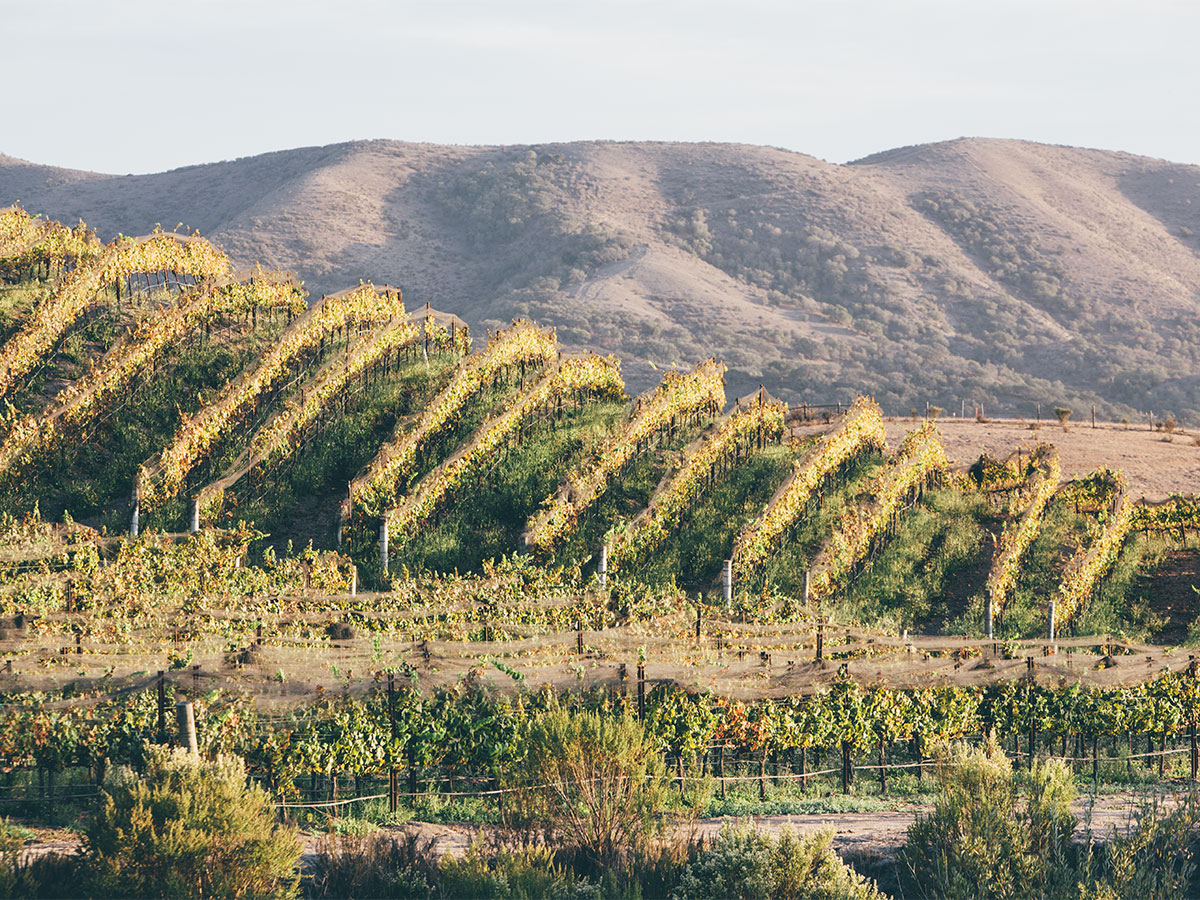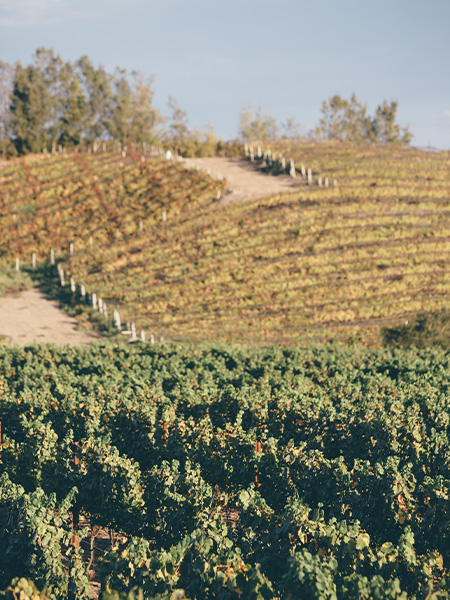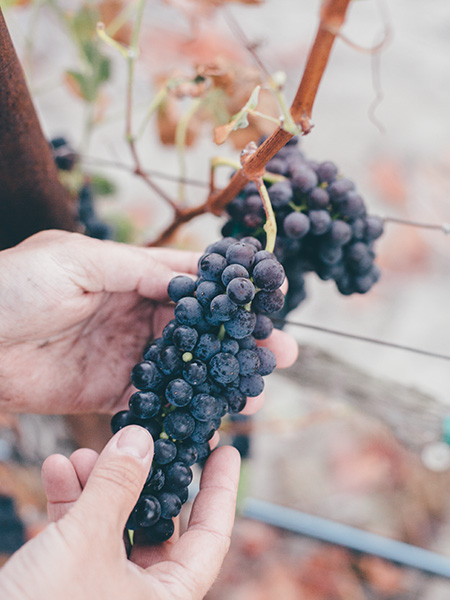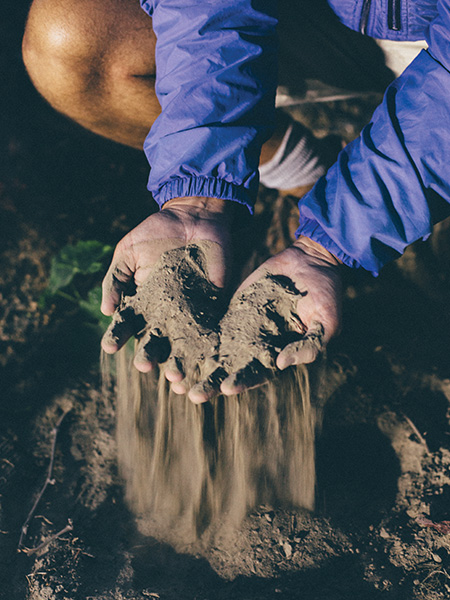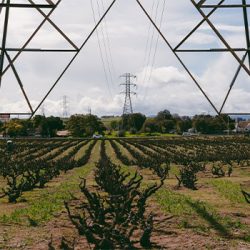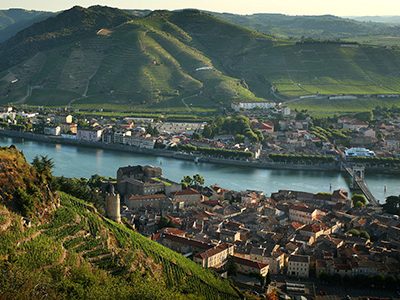Adam Tolmach of the Ojai Vineyard has been fretting over syrah for the better part of three decades. Along with Qupé founder Bob Lindquist, he’s one of the most committed Central Coast syrah practitioners, having worked with a wide range of vineyards, climates, soil types and styles. These wines and others have not escaped controversy, as in a decade ago, when he tried to walk back years of ripeness creep in his wines.
In 2008, Tolmach admitted to a reporter at the Los Angeles Times that he no longer drank his own wines, that his taste didn’t align with the prevailing style of the day. “We had lost our rudder when we went for even bolder, riper flavors,” he said, vowing to make leaner, low-alcohol wines.
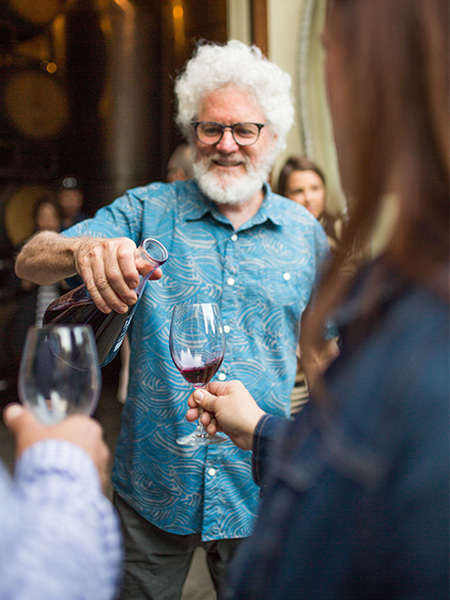

In the years since, Tolmach has quietly jettisoned contracts in warmer Santa Barbara County locales, like Ballard Canyon, Happy Canyon, the inland valleys of Santa Ynez, even his winery’s namesake region, Ojai. He headed west toward the Pacific and the anomalous transverse east/west valleys of the southern Central Coast looking for cooler syrah sources. He found them in the Sta. Rita Hills—often alongside or nearby his most marginal sources for pinot noir.
Tolmach had worked with syrah from the region in tiny amounts—there were only tiny amounts—since they early 2000s. He found the syrahs to possess a sanguine, thick-skinned intensity, like many of the pinots of the region. But compared with warmer Central Coast appellations, the syrahs here felt aromatically unleashed.
“Sure, warmer sites possessed lots of fruity goodness,” he says, “but I preferred the savory. They were like Côte Rotie, in their animal, incense-filled, violet aroma and flavor.” Despite exceptional depth and impact—and even ripeness, the wines feel nervous and edgy—which, for Tolmach has become a hallmark:
“When grapes are grown on the edge of where they will ripen,” he said, “you’re probably in the right place.”
The climate in the Sta. Rita Hills is edgy, by any measure. With direct exposure to the Pacific just north of the jutting elbow of Point Conception, it’s subject to prodigious wind as well as regular fog that curtails sunlight hours and contributes to some of the coolest average summer temperatures in the state.
Pinot noir’s early bud break, short growing season and rush to maturity in the latter part of the vintage made planting it worth the risk. As for syrah, most early plantings were situated on the warmer, east side of the appellation, away from the coast. Planting syrah at all seemed risky, given its late start and longer arc of maturity. But such calculus didn’t fully take into account the forgiving autumn weather of the southern Central Coast, resulting in a much longer growing season, which Tolmach discovered as he sought out cooler sites.
“What’s unique about Santa Barbara County,” he says, “is that you’d think it’s too cool; but here we can ripen fruit all the way to the end of October. We don’t have the same threat of rain, or killing frosts, as they do up north.” That late back end, according to Tolmach, opens up the variety to several stylistic possibilities. “It’s hard to find a place where you can’t ripen syrah,” he says. “That allows you to do things you wouldn’t think you’d be able to do.”
It allows for harvest in the last week of October, as Chad Melville is preparing to do when I meet him at his family’s winery, just as the fog is lifting on a pale autumn morning. Melville had spent the last few hours pressing off bins of estate fruit from his home vineyard, some of the oldest syrah plantings in the Sta. Rita Hills. His fingers make him look as if he’s just been booked for a crime: Syrah juice has penetrated the whorls of his fingertips, it lurks beneath his fingernails, it’s infiltrated his knuckle creases and palm lines. You can imagine, in a region known for pinot noirs so opaque that people wonder about clandestine syrah additions, how inky the actual syrah is; on his hands and in the bins, the depth of color is formidable.
Melville takes me to his remaining block of syrah on the vine, just a few steps from the winery, one of the warmer parts of the vineyard. It isn’t much to look at: It’s set on a modest slope of almost pure sand, and it’s clear that the vines are more than ready to call it quits for 2019. The clusters hang loosely from the shoots, and the fruit has begun to dimple and sag, as ripe syrah will do. In a warmer Paso Robles vineyard, such dimpling would mean that the picking window had passed, that the grapes had lost whatever nerve they once possessed. But, I realize as I taste them, the grapes here still have acidity.
For many years, Melville tried to produce a wine with yields that far exceeded what the climate would allow. “We had a sense that syrah would work,” says Melville, “but we also felt that there were going to be years when it wasn’t going to perform well. How often could we knock it out of the park? Was it two years in ten? Five? Eight? We weren’t sure.” His then-winemaker, Greg Brewer, kept urging him to graft it over to some other variety that would better their odds. But Melville resisted; he kept tinkering with his viticulture, and started to convert the vineyard to biodynamics. “Our approach to farming changed,” he says, “and we started to farm the estate syrah blocks much more aggressively—dropping a lot of fruit, doing a lot of leaf-pulling.” Estate farming also meant having the luxury to pick when he wanted, and he started to harvest the same blocks multiple times: an early pick for high-tone aromatics and energy, and a late pick to add color and depth, and to ripen the stems for whole-cluster ferments. The picking window can last as long as three weeks.
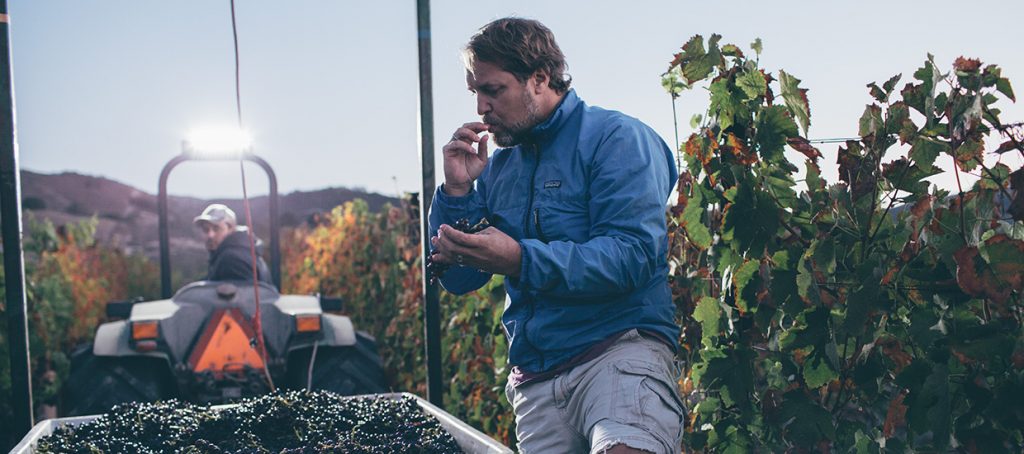

Melville makes two syrahs from his estate vineyards, the winery block and Donna’s, a slightly warmer block about a mile east of the winery. He ferments Donna’s as whole clusters, then ages it in neutral wood, with 20 to 22 months in barrel. There’s plenty of tension and nerve in both estate wines, but what’s surprising is how plush and deep the flavors remain, with alcohol levels in the high 13s, often more than a full percentage point lower than syrahs from Ballard Canyon, which is 12 miles away and significantly warmer.
Just east of Melville, butting up against the eastern border of the appellation, lies John Sebastiano vineyard, a sprawling property developed by John Wagner, an LA businessman, and Sebastiano Sterpa, a former cattle rancher, in 2007. Of their 150 acres of vines, more than two-thirds are devoted to pinot noir. But Sterpa and Wagner have planted almost 30 acres of syrah, and it’s become a prized source for syrah-focused wineries including Ojai, Piedrasassi, Barden, Dragonette, Holus Bolus and Paul Lato. Many of them produce vineyard designates from the John Sebastiano fruit. On a fall day at the end of the season, with leaves thinning and turning brown, the vineyard looks barren and windswept, its dun-colored clay and sandy soils flecked with dropped clusters, the dry canopies rustling in the afternoon breeze. Wind-borne dust coats the leaves, the equipment, the vines, your shoes. Just to the west, Crawford Canyon channels the ocean’s breezes straight into the vineyard’s midsection.
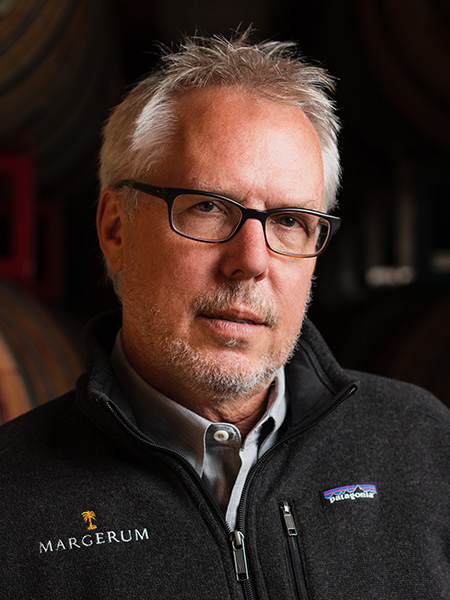

The syrah at John Sebastiano is characterized by deep flavors; the wines tend to be compact and dense, without being rich in any way, a concentration that tastes of thick, dark skins that have had the luxury of time to ripen and mature. The vineyard inspired Doug Margerum to found a second brand, Barden (his middle name), devoted entirely to the Sta. Rita Hills. His Barden syrah, which was sourced from Sebastiano until 2017 (he now uses a vineyard nearby called Donnachadh) is a departure from the Margerum line, which focuses on warmer syrah sources, east of the 101 freeway. Long a proponent of a richer, burly style of syrah, Margerum is pleased to let the region extend his range. “We have such an array of microclimates in Santa Barbara,” he says. “I feel it’s much more pronounced than in Burgundy, or the northern Rhône. But, of course, we also have the freedom to plant syrah next to pinot noir.” He’s changed his winemaking accordingly—using more whole clusters and shorter aging periods—with dramatic results, producing syrah that’s generous, even a bit rich, but with a cool aromatic profile of purple flowers and pink peppercorns.
Probably the most significant early adopter of Rhône varieties on the east side of the Sta. Rita Hills was Sine Qua Non, the cult producer founded in 1994 by Manfred and Elaine Krankl. Like Tolmach, Manfred Krankl worked with several warmer-climate vineyards in Santa Barbara County, and still does. But the backbone of his red wine program is Eleven Confessions, his north-facing vineyard neighboring Sebastiano on the ocean side, planted in 2001. “People thought we were crazy to plant syrah and grenache,” says Krankl. “It was too cool, this was pinot and chardonnay country. But I didn’t buy into that.”
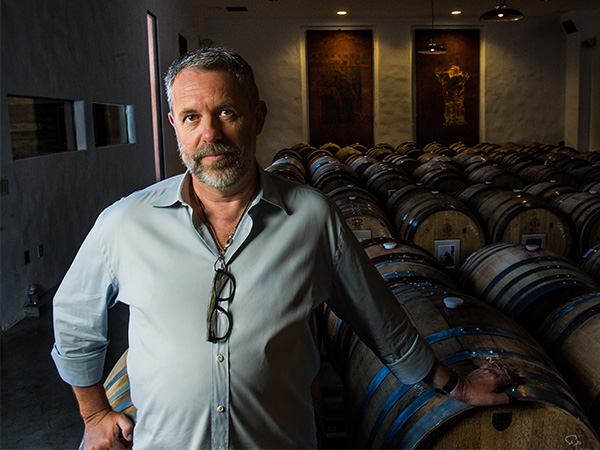

— Manfred Krankl, Sine Qua Non
Some portion of Eleven Confessions goes into every red that Krankl makes, acting like a tether on an otherwise opulent wine style. “You need that in a large wine,” he says. “You need to build in agility, to keep the wine nervous.” He compares the finesse of Sta. Rita Hills fruit to the thread count in an Oriental rug. “The better rugs have more knots, a finer weave. That’s what happens in cooler climates, I think.”
Just to the east of Eleven Confessions is Patterson vineyard, used by Piedrasassi. Peake Ranch and Pence Ranch have both planted small plots of syrah, as has Ryan Zotovich at his home winery near Melville. Perhaps the most exciting new development is the syrah from Spear vineyard, just west of John Sebastiano, where Ofer Shepher planted four acres with three clones of syrah in 2013; early wines, from winemaker Kat Gaffney, are dramatically savory and sultry.
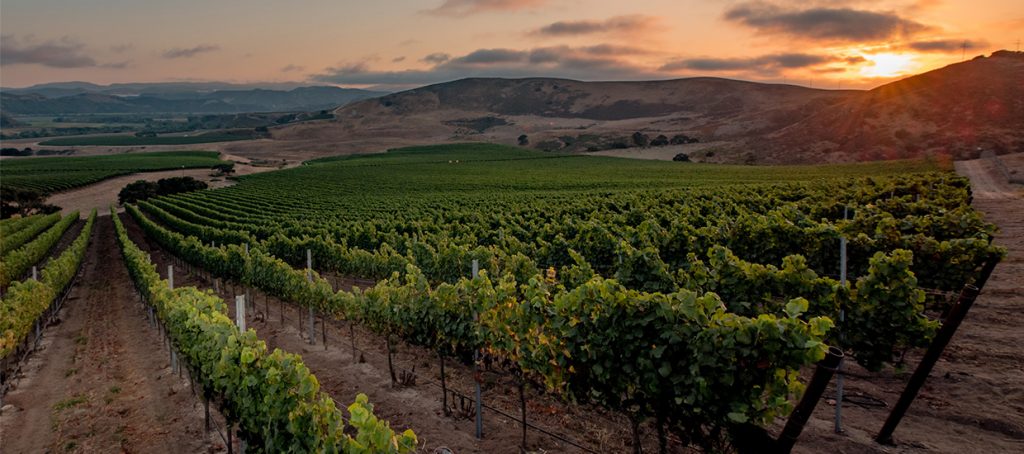

But to really see what’s going on for syrah in the appellation, you have to get in your car and head west on State Route 246 toward Lompoc. Keep one eye on the road, and the other on your dashboard temperature gauge as you drive: You’ll notice a temperature drop, like clockwork, of one degree for every mile you drive west. Ten miles, ten degrees. By the time you’ve reached the western edge of the appellation you’re less than ten miles from the ocean, on windswept bluffs pointing west and south, composed of shale and diatomaceous earth, just slightly darker than limestone. The hills look eerie in the pale coastal light.
Fifteen years ago, cattle roamed these hills, and, it was unheard of to grow anything this far west outside of strawberries and cruciferous vegetables. But in 2007, as part of their grand multi-region experiment, Evening Land planted pinot noir on these western bluffs. Those vineyards—now called Memorious, Bloom’s Field and the Côte—were purchased by Rajat Parr and Sashi Moorman for Domaine de la Côte in 2013; they are still the source for nervy pinot noir bottlings. It took another ten years for syrah to follow, when Amy Christine and Peter Hunken of Holus Bolus decided to plant syrah at their new vineyard, the Joy Fantastic.
The husband-and-wife team has been quietly cultivating a reputation for lean, aromatic Santa Barbara County syrahs since 2005, all made from purchased fruit, including from John Sebastiano, which they continue to use for a vineyard designate. Their new vineyard takes cool to another level; it’s the westernmost syrah vineyard in the Sta. Rita Hills. Only one other vineyard, Duvarita, literally across the street from the AVA’s western border, comes close.
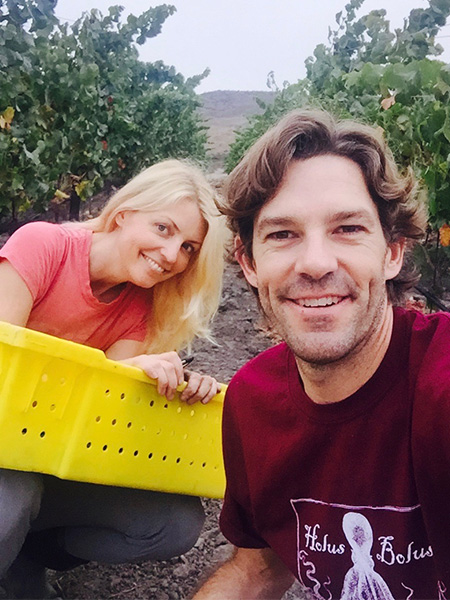

The Joy Fantastic (a reference to the 1999 Prince album Rave Un2 the Joy Fantastic) rises up a steep west-facing slope beneath a sloughing diatomaceous cliff. Hunken and Christine farm it organically, by hand, with the cooler elevated parcels planted to chardonnay and pinot noir, and a lower, slightly protected block planted to four clones of syrah. Christine says that, during the season, the site is under heavy fog until 10 a.m.; when it lifts, the wind picks up in force until the fog returns and the cycle repeats itself. Yields are tight. It’s one of the most extreme sites for syrah in California.
At the moment, the only wineries making syrahs from both the east and west sides of the appellation are Holus Bolus and Ojai (Tolmach’s western fruit source is Duvarita). Both wineries make a vineyard designate from John Sebastiano. Both, then, have points of comparison from west to east, and are familiar with the challenges the two sectors present.
“It feels like the west is more battered with wind,” says Hunken, “and the fog clears later. It’s the same type of weather but you’re dealing with ten miles of temperature difference. Having said that, the harvest dates aren’t hugely different. Joy Fantastic comes in a week later, maybe ten days.”
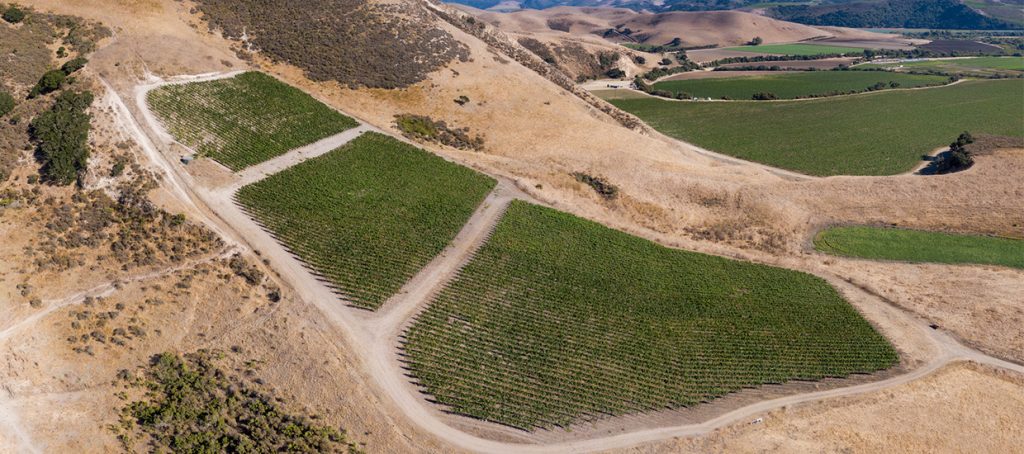

Tolmach has a similar experience, right down to how close the harvests are, which, on its face, he points out, is an anomaly. “It’s cooler at Duvarita, for sure,” he says, “but it gets complicated the closer you get to the ocean. Nights are more balmy; the diurnal shift isn’t as dramatic.” Tolmach believes that with warmer west-side nights, the vines end up metabolizing some of their tartaric acid. The pinot noir from there can actually seem bigger, relatively, for sites that are so much cooler. For syrah, however, he feels the buffered acidity is a positive result.
Hunken and Tolmach use similar language in describing comparative tastings. “Joy Fantastic is more austere than the JSV,” says Hunken. “There are cool-climate aromatics, but it’s never gamey—instead there’s a dark mineral core to those wines. They’re not as lush.”
“They have their own personalities,” says Tolmach. “Sebastiano tends to have softer tannins, it’s more user-friendly earlier, but has its own cornucopia of herbs and spices. Duvarita tends to be really tannic, also red-fruited, very herbal, or tea-like.”
In tastings at the magazine, we experienced a similar compression as we tasted wines from east to west, side by side. The wines from JSV seem tense and peppery upfront, before their depth and sneaky richness revealed itself. You’d think of them as edgy until you tasted the wines from Duvarita and Joy Fantastic, which feel still more austere and oceanic. Just as the temperature drops as you drive west, Sta. Rita Hills syrahs seem to constrict in an analogous way, becoming more tense, more compact, more savory by the mile.
This feature from W&S February 2020 is part of our Regional Tasting Report on US syrah & Rhône varieties. Click here to return to the homepage.
Patrick J. Comiskey covers US wines for Wine & Spirits magazine, focusing on the Pacific Northwest, California’s Central Coast and New York’s Finger Lakes.
This story appears in the print issue of February 2020.
Like what you read? Subscribe today.

